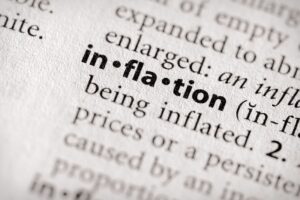Nearly 13 years ago, the life settlement market underwent a massive shift due to the 2008 financial crisis. Medical underwriters modified actuarial assumptions, and the financial crisis resulted in a convergence of events that massively impacted portfolios and caused investors to remain wary of the asset class.
However, today’s stock market valuations are reaching near-record levels, and real bond yields are below zero. On the other hand, the asset class can deliver high single or even low double-digit annual returns, as life settlements are more appealing and relevant than ever before.
Keeping this perspective in mind is also crucial while remembering how life settlements were impacted during the 2008 financial crisis. Understanding if today’s market is in a greater position to withstand the next global financial crisis is critical. Last year’s global pandemic-related market setback acted as a major stress test for life settlement firms, as early indications are reassuring.
2008 Financial Crisis vs. Global Pandemic Market Impact
Understanding what caused the 2008 financial crisis is important in learning from past errors to avoid making the same mistakes in the future. The economic fallout of 2008 was the perfect storm against the life settlement industry, as no one was prepared for its ramifications. One event occurred near the end of 2007, as two of the top underwriters for life settlement companies made significant changes to their data tables.
A few months later, the Valuation Basic Tables (VBTs) were updated, impacting asset valuation levels for many different portfolios that were much more negative than expected. Even some cases with revised life expectancies caused the financed assets to become underwater, which resulted in forced selling. The valuation markdown would have even made a significant impact on the life settlements market by themselves.
However, the collapse of Bear Stearns in March 2008 created a major financial crisis that impacted life settlements. The leverage for financing premiums in many of the portfolios became much more costly, resulting in significant losses for mark-to-market portfolios. Many of the returns in the asset class declined due to the impact of the 2008 financial crisis.
How the Life Settlement Market is Different Now
Several changes to the life settlement market put it in a much better position to handle the economic fallout of a global shutdown. One of these changes is that it’s a much larger and stable asset base. The rapid growth of the life settlement market has improved stability, as some projections predict that the market volume will reach $60 billion by 2025 due to the baby boomer generation reaching the prime age for life insurance policies.
Data is also better understood compared to the 2008 financial crisis. Many life settlement fund managers use analytics for a more objective and measured approach, which helps to bring stability to the market. Access to more data includes relying on several underwriter inputs, detailed statistical analysis, and VBT tables. Regulations involving the life settlement market are also much more widespread. For example, 43 out of 50 states have specific rules that govern how individuals can sell their policies. Improved regulations are especially effective at limiting bad actors from trying to take advantage of policyholders.
How the Global Pandemic Acted as a Stress Test
While the global shutdown that occurred in March 2020 wasn’t as devastating as the 2008 financial crisis, it still served as a great stress test for handling economic fallout across the globe. Central banks and governments learned a few lessons from 2008, as they quickly overwhelmed the markets with unprecedented liquidity to help limit the impact of the global pandemic.
Supply was initially limited near the beginning of the global pandemic, as many potential sellers used a wait-and-see approach to see how everything would play out. These factors created some volatility, but they didn’t result in steep losses during the 2008 financial crisis, as the asset class was still able to thrive. In other words, the life settlement market took a punch but could still keep going despite the many different challenges of a global pandemic.
Closing Thoughts
Many things have changed since the 2008 financial crisis, as the life settlement market has significantly grown in not only assets, but it’s also become much more sophisticated, and it’s appealing to a larger group of investors. The changes in the life settlement industry will help to enhance market liquidity, decrease the embedded beta that’s common in open-ended life settlement funds, and further improve regulations impacting life settlement companies. All of these changes make it an excellent time for investors to consider the life insurance settlement market due to its ability to withstand the financial crisis of the global pandemic.































































